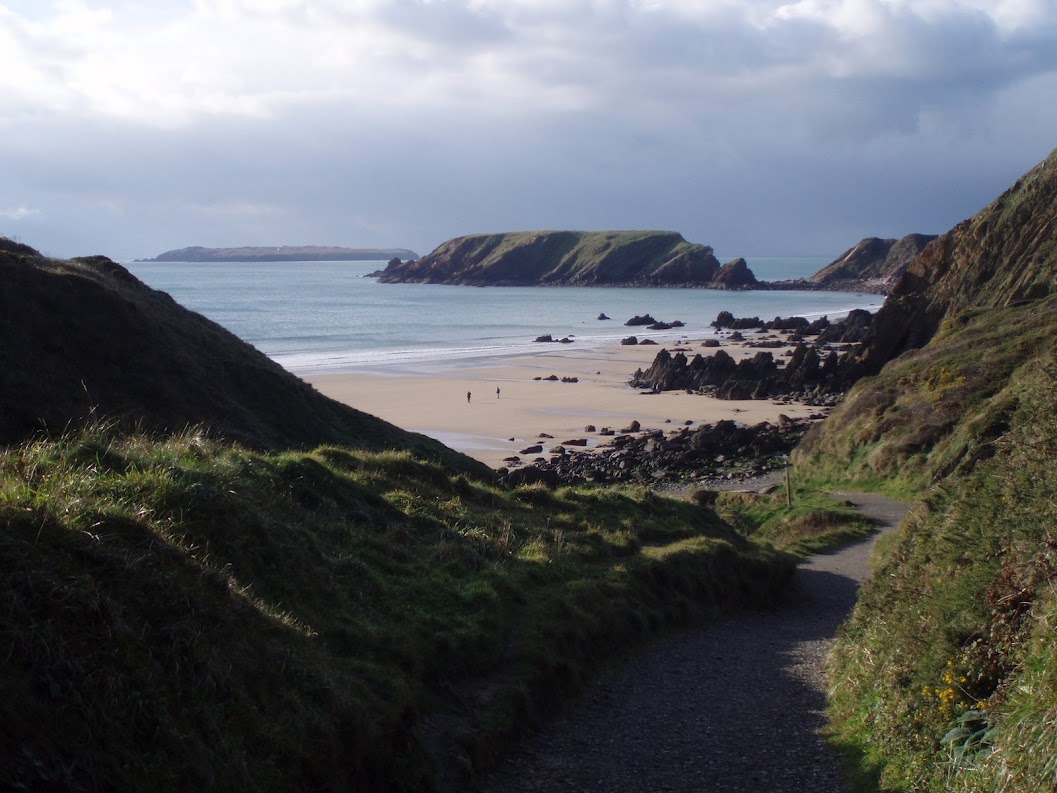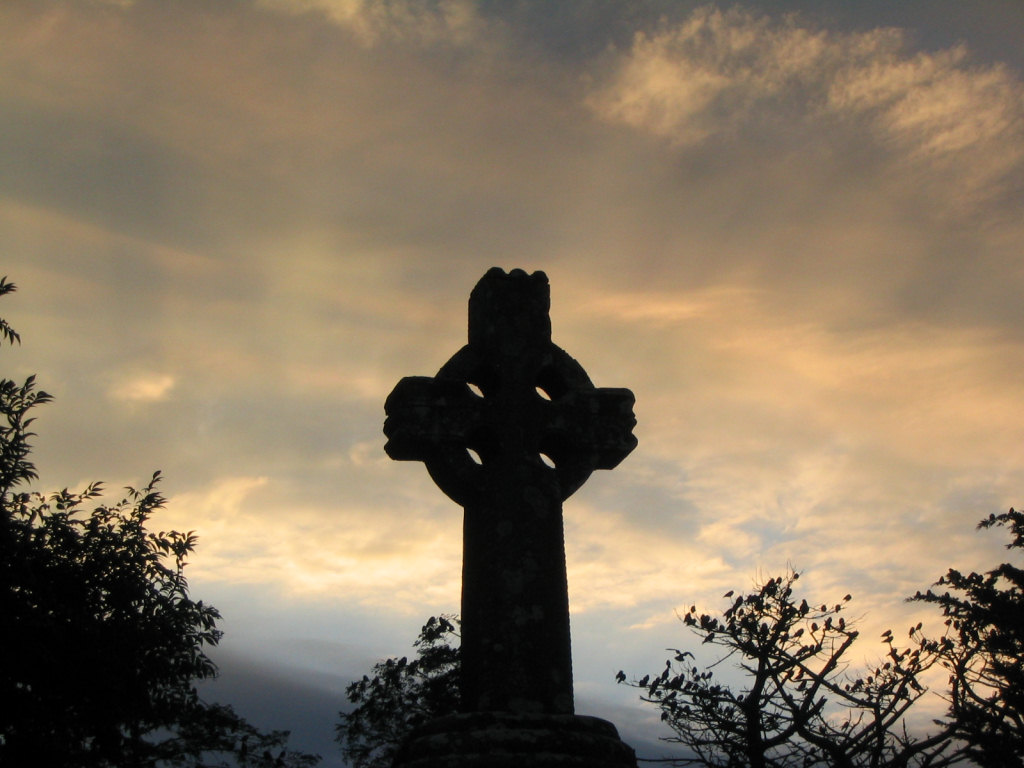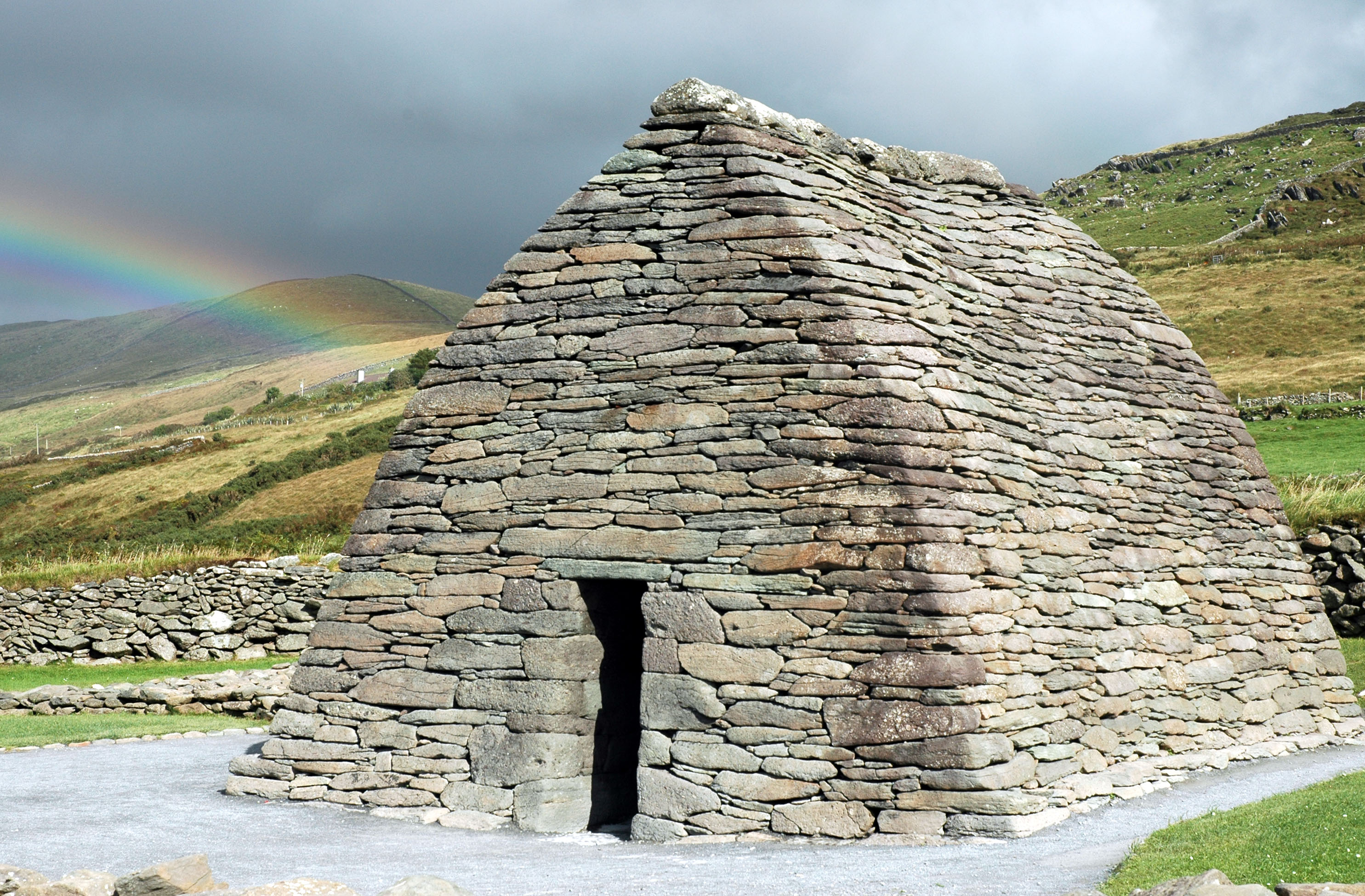|
Gateholm
Gateholm or Gateholm Island is a small tidal island off the south west coast of Pembrokeshire, in the community of Marloes and St Brides, in the south west side of Wales, in the west of the UK, and about 8 miles (13 km) west of the port of Milford Haven. It is known for its Romano-British remains. Gateholm is owned by the National Trust as part of their Marloes Sands and Mere estate. Name The name, recorded as ''Goteholme'' in 1480, derives from Old Norse for "goat island" or "street peninsula". Geography Gateholm is at the western end of Marloes Sands, and is accessible only at low tide. Gateholm rises to a small plateau 40 metres (131 feet) high, and with an area of about .John Buxton, Ronald Mathias Lockley, (1950), ''Island of Skomer:a preliminary survey of the natural history of Skomer Island, Pembrokeshire'', page 16. Staples Press The island consists of steeply-dipping Old Red Sandstone. The rock strata date from the Prídolí Epoch of the Silurian; the exceptiona ... [...More Info...] [...Related Items...] OR: [Wikipedia] [Google] [Baidu] |
Marloes Sands
Marloes Sands () is an approx. long remote sandy beach in Pembrokeshire, Wales, near the village of Marloes. It's broadly curved and surrounded by cliffs. Walking on the beach gives great views of Skokholm Island and Gateholm Island. Location and access The beach is located SW from the Marloes village and there is a National Trust car-park nearby (charge per day or free for National Trust members). There is a track that leads from the main road to the beach. There is a disused World War II Royal Air Force airfield RAF Dale, above the south-east cliffs of the beach. There are approximately three accesses to the beach which become very useful if you get caught by the tide coming in. Besides the main access from Runwayskiln, there is also access to the north, near Gateholm Island, that requires some scrambling over the rocks and another access to the south that has steps leading to the midsection of the beach. Geology The surrounding cliffs are layered with red sandstone and grey ... [...More Info...] [...Related Items...] OR: [Wikipedia] [Google] [Baidu] |
Marloes And St Brides
Marloes and St. Brides (Welsh: ''Marloes a Sain Ffraid'') is a community in the West Wales county of Pembrokeshire. The main settlements are the villages of Marloes and St Brides. Both villages lie on the southern shore of St Brides Bay The islands of Gateholm, Grassholm Grassholm ( cy, Gwales or ) or Grassholm Island is a small uninhabited island situated off the southwestern Pembrokeshire coast in Wales, lying west of Skomer, in the community of Marloes and St Brides. It is the westernmost point in Wales ..., Middleholm, Skomer, Skokholm and The Smalls lie in the community. The community population taken at the 2011 census was 305. References External links Contact details for Marloes and St Brides Community Council Communities in Pembrokeshire {{Pembrokeshire-geo-stub ... [...More Info...] [...Related Items...] OR: [Wikipedia] [Google] [Baidu] |
Snow White And The Huntsman
''Snow White and the Huntsman'' is a 2012 American fantasy film based on the German fairy tale "Snow White" compiled by the Brothers Grimm. The directorial debut of Rupert Sanders, it was written by Evan Daugherty, John Lee Hancock and Hossein Amini, from a screen story by Daugherty. The cast includes Kristen Stewart, Charlize Theron, Chris Hemsworth, Sam Claflin, and Bob Hoskins in his final film performance. In the film's retelling of the tale, Snow White grows up imprisoned by her evil stepmother, Queen Ravenna, a powerful sorceress. After Snow White escapes into the forest, Ravenna enlists Eric the Huntsman to capture her, but he becomes her companion in a quest to overthrow Ravenna. ''Snow White and the Huntsman'' was theatrically released in the United Kingdom on May 30, 2012 and in the United States on June 1, 2012, by Universal Pictures. The film was a box office success, having grossed $396 million worldwide against a $170 million budget. Critics praised the produc ... [...More Info...] [...Related Items...] OR: [Wikipedia] [Google] [Baidu] |
Tidal Island
A tidal island is a piece of land that is connected to the mainland by a natural or man-made causeway that is exposed at low tide and submerged at high tide. Because of the mystique surrounding tidal islands, many of them have been sites of religious worship, such as Mont-Saint-Michel with its Benedictine Abbey. Tidal islands are also commonly the sites of fortresses because of their natural fortifications. List of tidal islands Asia Hong Kong * Ma Shi Chau in Tai Po District, northeastern New Territories, within the Tolo Harbour *Kiu Tau Island in Sai Kung Iran * Naaz islands in Persian gulf, southern seashore of Qeshm island Japan * Enoshima, in Sagami Bay, Kanagawa Prefecture Taiwan * Kueibishan in Penghu * Jiangong Islet in Kinmen South Korea * Jindo Island and Modo Island in southwest South Korea * Jebudo in the west Europe Denmark * Mandø Island – on Denmark's western coast * Knudshoved Island – north of Vordingborg on southern Zealand, De ... [...More Info...] [...Related Items...] OR: [Wikipedia] [Google] [Baidu] |
Marloes
Marloes is a village and parish in Pembrokeshire, Wales, on the Marloes Peninsula west of Milford Haven and forms the western tip of the southern shore of St Brides Bay. It is within part of the Pembrokeshire Coast National Park. The parish has of mainland coastline accessible throughout by the Pembrokeshire Coast Path and, together with St Brides, constitutes the community of Marloes and St Brides. In 2001, the population was 323. Name The name appears to derive from Old Welsh 'bare' and 'moor' or 'promontory', identical to Melrose in Scotland. It is locally pronounced . A part of Little England beyond Wales, it has been essentially English-speaking for 900 years. Geography The Marloes Sands beach, located SW from Marloes, is rated as one of the best beaches in Britain but involves a fairly long walk to reach it. The National Trust owns the western half of the peninsula, including the open-access deer park on its western tip, which is a favourite area for picnicking ... [...More Info...] [...Related Items...] OR: [Wikipedia] [Google] [Baidu] |
Skokholm
Skokholm () or Skokholm Island is an island off the coast of Pembrokeshire, Wales, south of the neighbouring island of Skomer. The surrounding waters are a marine reserve and all are part of the Pembrokeshire Coast National Park. Both islands are listed as Sites of Special Scientific Interest. Geography Skokholm is long and wide, covering . Made up of Old Red Sandstone, its cliffs stand between in the northeast, to in the southwest. Battered by storms, the high cliffs and isolated nature of the island make it a haven for seabirds. There is a rock outcrop close to the centre of the island, which provides shelter to the island's only structures. Its greatest height is 55 metres (180 feet). History Whilst no trees grow on the island in modern times, Skokholm is possibly Norse for "wooded island", a combination of ''skógr'' (wood, modern Norwegian: ''skog'') and ''holmr'' (small island, middle English ''holm'' and modern Norwegian ''holme''), named by the Vikings. The isla ... [...More Info...] [...Related Items...] OR: [Wikipedia] [Google] [Baidu] |
SSSI
A Site of Special Scientific Interest (SSSI) in Great Britain or an Area of Special Scientific Interest (ASSI) in the Isle of Man and Northern Ireland is a conservation designation denoting a protected area in the United Kingdom and Isle of Man. SSSI/ASSIs are the basic building block of site-based nature conservation legislation and most other legal nature/geological conservation designations in the United Kingdom are based upon them, including national nature reserves, Ramsar sites, Special Protection Areas, and Special Areas of Conservation. The acronym "SSSI" is often pronounced "triple-S I". Selection and conservation Sites notified for their biological interest are known as Biological SSSIs (or ASSIs), and those notified for geological or physiographic interest are Geological SSSIs (or ASSIs). Sites may be divided into management units, with some areas including units that are noted for both biological and geological interest. Biological Biological SSSI/ASSIs m ... [...More Info...] [...Related Items...] OR: [Wikipedia] [Google] [Baidu] |
Islands Of Pembrokeshire
An island or isle is a piece of subcontinental land completely surrounded by water. Very small islands such as emergent land features on atolls can be called islets, skerries, cays or keys. An island in a river or a lake island may be called an eyot or ait, and a small island off the coast may be called a holm. Sedimentary islands in the Ganges Delta are called chars. A grouping of geographically or geologically related islands, such as the Philippines, is referred to as an archipelago. There are two main types of islands in the sea: continental islands and oceanic islands. There are also artificial islands (man-made islands). There are about 900,000 official islands in the world. This number consists of all the officially-reported islands of each country. The total number of islands in the world is unknown. There may be hundreds of thousands of tiny islands that are unknown and uncounted. The number of sea islands in the world is estimated to be more than 200,000. The ... [...More Info...] [...Related Items...] OR: [Wikipedia] [Google] [Baidu] |
Time Team
''Time Team'' is a British television programme that originally aired on Channel 4, Channel 4 from 16 January 1994 to 7 September 2014. It returned online in 2022 for two episodes released on YouTube. Created by television producer Tim Taylor (producer), Tim Taylor and presented by actor Tony Robinson, each episode featured a team of specialists carrying out an archaeology, archaeological Excavation (archaeology), dig over a period of three days, with Robinson explaining the process in lay terms. The specialists changed throughout the programme's run, although it consistently included professional archaeologists such as Mick Aston, Carenza Lewis, Francis Pryor and Phil Harding (archaeologist), Phil Harding. The sites excavated ranged in date from the Palaeolithic to the Second World War. In October 2012, Channel 4, Channel 4 announced that the final series would be broadcast in 2013. Series 20 was screened from January–March 2013 and nine ... [...More Info...] [...Related Items...] OR: [Wikipedia] [Google] [Baidu] |
Celtic Christianity
Celtic Christianity ( kw, Kristoneth; cy, Cristnogaeth; gd, Crìosdaidheachd; gv, Credjue Creestee/Creestiaght; ga, Críostaíocht/Críostúlacht; br, Kristeniezh; gl, Cristianismo celta) is a form of Christianity that was common, or held to be common, across the Celtic-speaking world during the Early Middle Ages. Some writers have described a distinct Celtic Church uniting the Celtic peoples and distinguishing them from adherents of the Roman Church, while others classify Celtic Christianity as a set of distinctive practices occurring in those areas. Varying scholars reject the former notion, but note that there were certain traditions and practices present in both the Irish and British churches that were not seen in the wider Christian world. Such practices include: a distinctive system for determining the dating of Easter, a style of monastic tonsure, a unique system of penance, and the popularity of going into "exile for Christ". Additionally, there were other pr ... [...More Info...] [...Related Items...] OR: [Wikipedia] [Google] [Baidu] |
Phallus
A phallus is a penis (especially when erect), an object that resembles a penis, or a mimetic image of an erect penis. In art history a figure with an erect penis is described as ithyphallic. Any object that symbolically—or, more precisely, iconically—resembles a penis may also be referred to as a phallus; however, such objects are more often referred to as being phallic (as in "phallic symbol"). Such symbols often represent fertility and cultural implications that are associated with the male sexual organ, as well as the male orgasm. Etymology The term is a loanword from Latin ''phallus'', itself borrowed from Greek (''phallos''), which is ultimately a derivation from the Proto-Indo-European root *''bʰel''- "to inflate, swell". Compare with Old Norse (and modern Icelandic) ''boli'' " bull", Old English ''bulluc'' " bullock", Greek " whale". Archaeology The Hohle phallus, a 28,000-year-old siltstone phallus discovered in the Hohle Fels cave and reassembled ... [...More Info...] [...Related Items...] OR: [Wikipedia] [Google] [Baidu] |
History Of Ireland (400–800)
The early medieval history of Ireland, often referred to as Early Christian Ireland, spans the 5th to 8th centuries, from the gradual emergence out of the protohistoric period (Ogham inscriptions in Primitive Irish, mentions in Greco-Roman ethnography) to the beginning of the Viking Age. The period notably includes the Hiberno-Scottish mission of Christianised Ireland to regions of pagan Great Britain and the spread of Irish cultural influence to Continental Europe. Overview At the start of the period, Ireland had emerged from a mysterious decline that archaeological evidence suggests had hit population levels and standards of living from c. 100–300 AD, called the Irish Dark Age by Thomas Charles-Edwards. The population was entirely rural and dispersed, with small ringforts the largest centres of human occupation. Some 40,000 of these are known, although there may have been as many as 50,000, and "archaeologists are agreed that the va ... [...More Info...] [...Related Items...] OR: [Wikipedia] [Google] [Baidu] |









